Wish Notes
The Best Tools for Creating and Managing Wish Notes!
Pondering how to organize your wishes? Discover powerful tools like Evernote and Notion for efficient wish list management – unlock the potential of your goals!

When creating and managing wish notes, consider using Evernote, Notion, Obsidian, Google Keep, or Zoho Notebook for diverse customization options. These tools offer specific features geared towards efficient wish list management, blending structured organization with creative freedom for personalized experiences. With a focus on collaboration, user-friendly interfaces, and secure sharing capabilities, these note-taking tools are indispensable for turning your wishes and aspirations into organized realities. Explore these tools to elevate your wishlist management and streamline your goal-setting process.
Key Takeaways
- Personalized customization options for visual appeal.
- Seamless collaboration features for sharing wish lists.
- Integration capabilities for efficient wishlist management.
- Accessibility across devices for on-the-go access.
- User-friendly interfaces for easy wish note creation.
Top Online Note-Taking Tools

Explore the top online note-taking tools that offer a range of features for personal and professional note management. Evernote stands out with its multimedia integration and various pricing options, making it suitable for both personal and professional use.
Notion provides customization and real-time collaboration features, available through free and premium plans. If you're looking for a free tool with a focus on personal knowledge management, Obsidian is a great choice.
Google Keep is known for its fast note-taking capabilities, image recognition, and synchronization across devices for easy access. Finally, Zoho Notebook allows you to create infinite notes and secure collaboration opportunities, with additional features like audio note-taking and checklists.
Each of these tools caters to different needs, so consider your requirements to choose the one that best suits your note-taking preferences.
Standout Features of Note-Taking Tools
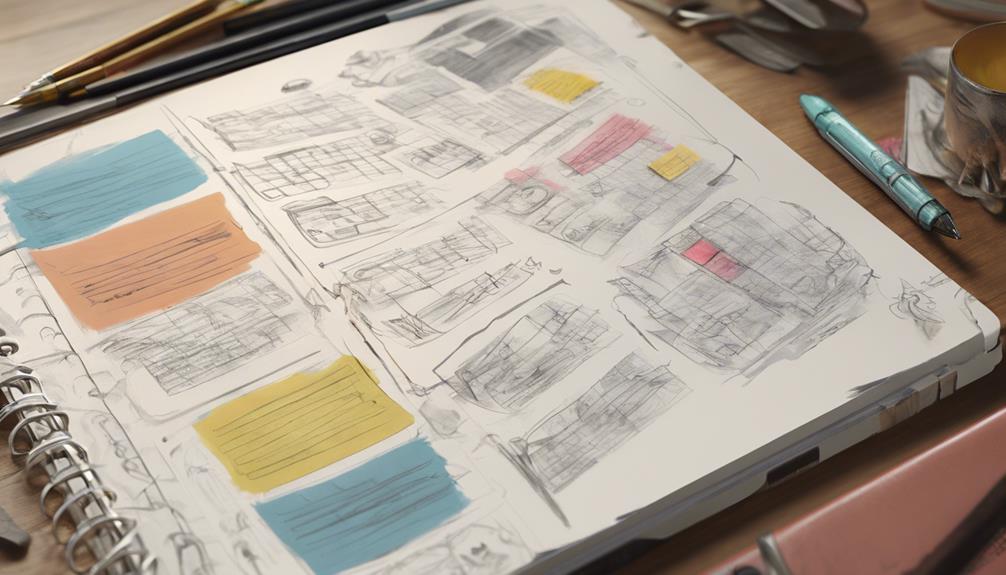
You'll find that each note-taking tool in this lineup brings unique functionalities to the table, setting them apart from one another.
By comparing these standout features, you can determine which tool aligns best with your note-taking needs.
Let's explore the distinctive traits that make these tools invaluable for creating and managing wish notes. One of the unique traits of wish note tools is their ability to help users set specific and achievable goals, whether personal or professional. They also provide a convenient way to track progress and stay organized. By using these tools, you can improve your relationships by setting and fulfilling meaningful wishes and fostering gratitude within your personal and professional networks.
Notable Tool Functionalities
Within the domain of note-taking tools, each platform offers standout features that cater to diverse user preferences and needs.
Real-time collaboration is a key functionality that enhances the efficiency of teamwork across multiple note-taking tools. Evernote excels in real-time collaboration, allowing users to work together seamlessly on notes and projects.
Notion also stands out with its robust team collaboration functionalities, enabling teams to collaborate effectively on shared documents.
Obsidian, while focusing on personalization, also supports real-time collaboration for users working together on projects.
Google Keep offers fast note-taking capabilities coupled with real-time syncing, facilitating quick collaboration among users.
Zoho Notebook's secure sharing and cloud synchronization features make real-time collaboration easy and secure for users.
These functionalities enhance the user experience, making note-taking tools indispensable for various personal and professional tasks.
Unique Features Comparison
Comparing the standout features of various note-taking tools reveals their unique functionalities for creating and managing wish notes efficiently. Each tool offers distinctive capabilities to cater to different preferences and needs when it comes to customizing wish notes. Here's a comparison of the customization options provided by Evernote, Notion, Obsidian, Google Keep, and Zoho Notebook:
| Note-Taking Tool | Customization Options |
|---|---|
| Evernote | Multimedia integration, real-time collaboration, customizable notes |
| Notion | Structured workspace, easy retrieval, sharing features |
| Obsidian | Free-form note-taking, advanced customization options |
| Google Keep | Fast note-taking, voice memo transcription, seamless syncing |
| Zoho Notebook | Infinite cloud notes, secure sharing, audio note-taking features |
Whether you prefer multimedia-rich notes, structured organization, free-form creativity, quick and easy capturing, or cloud-based all-encompassing solutions, there's a note-taking tool with the right customization options to suit your wish note management needs.
Pricing Options and Duration

When considering note-taking tools, assessing the cost and plans available is crucial, along with reviewing the subscription details provided.
Understanding the duration options and pricing structures can assist you in making an informed decision on the most suitable tool for your needs.
Take a closer look at the features each plan offers to ascertain which one aligns with your requirements.
Cost and Plans
Considering the cost and plans of note-taking tools, various options cater to different budgets and preferences. For those looking for a free online tool, Google Keep and Obsidian are excellent choices. Google Keep is entirely free to use, with no paid plans or subscriptions required.
On the other hand, Obsidian is a free note-taking tool with no subscription or premium plans, making it a cost-effective option for users. If you're willing to invest a bit more, Evernote and Notion offer paid plans with additional features. Evernote provides a free basic plan, a Personal plan for $7.99 per month, and a Professional plan for $14.99 per month.
Notion, on the other hand, offers a free plan along with a Plus plan for $4 per month and a Teams plan for $8 per month per user. Consider the pricing options and duration of each tool to find the best fit for your budget and note-taking needs.
Subscription Details
Explore the subscription details, including pricing options and durations, to better understand the value each note-taking tool offers beyond their free plans.
When considering which subscription to choose, take into account the user interface, as it plays a significant role in your overall experience.
- Flexible Payment Plans: Look for tools that offer both monthly and annual subscription options to suit your budget and commitment preferences.
- Tiered Subscription Levels: Consider whether the tool provides different subscription levels like individual, team, or enterprise plans to align with your specific needs.
- Feature Variation: Evaluate how the paid plans enhance the user interface, providing advanced features like collaboration tools and integrations that may be essential for your note-taking tasks.
Duration Options
Review the duration choices available for note-taking tools to make an informed decision based on your budget and usage needs.
When considering duration choices, note-taking tools often offer options between monthly or annual subscriptions. Opting for an annual plan can sometimes result in cost savings through discounted rates.
Additionally, some tools may provide tiered pricing plans tailored for personal, professional, or team use, allowing you to choose the most suitable option for your requirements.
It's important to keep in mind that free versions of these tools may come with limitations, such as restricted cloud storage space, collaboration features, or advanced functionalities. Hence, evaluating your budget and usage needs is vital in determining which duration choice will offer you with the necessary features and value.
Specific Features of Google Keep
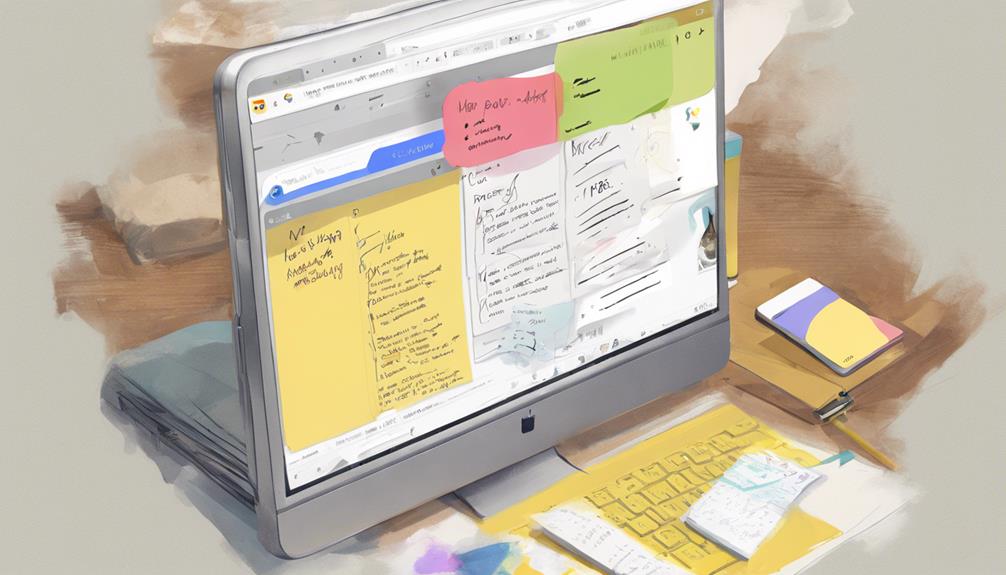
Google Keep in Google's suite of tools offers specific features that improve note-taking efficiency and organization.
When it comes to multimedia elements, Google Keep stands out with its image identification feature for PDFs and images, making it simpler for you to arrange visual content within your notes.
Additionally, the smooth synchronization of all data across devices guarantees that your notes are always accessible, no matter where you are.
The platform also enables you to collaborate with others effortlessly, whether it's sharing notes or working together in real-time.
With Google Keep's user-friendly interface and intuitive design, taking notes becomes a straightforward and enjoyable task.
- Image identification feature for PDFs and images
- Smooth synchronization of data across devices
- Effortless collaboration with others
Specific Features of Zoho Notebook
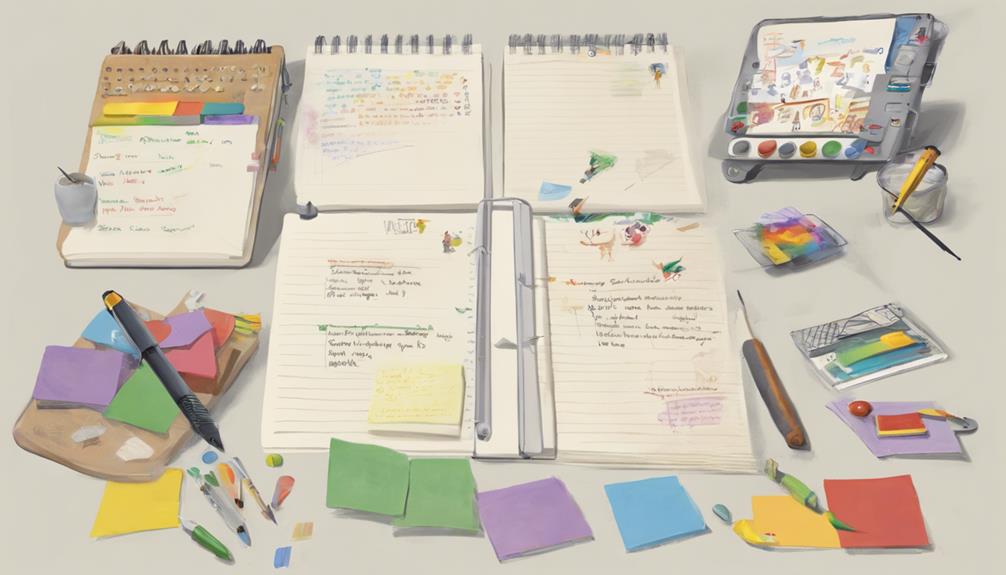
With Zoho Notebook, users can effortlessly create and organize an unlimited number of notes and notebooks in the cloud. This best note-taking tool offers secure sharing and collaboration features, allowing seamless teamwork on wish notes. You can take audio notes and create checklists within Zoho Notebook to efficiently manage wishes and tasks. The tool guarantees all your data syncs to the cloud and across devices for easy accessibility. Additionally, Zoho Notebook provides a user-friendly interface and customizable features to personalize wish notes according to your preferences.
| Specific Features of Zoho Notebook | |
|---|---|
| Feature | Description |
| Infinite Notes | Create boundless notes and notebooks in the cloud. |
| Secure Sharing | Collaborate securely with team members on wish notes. |
| Audio Notes | Record sound notes to capture wishes conveniently. |
| Checklists | Utilize checklists to track wishes and tasks effectively. |
Specific Features of Simplenote
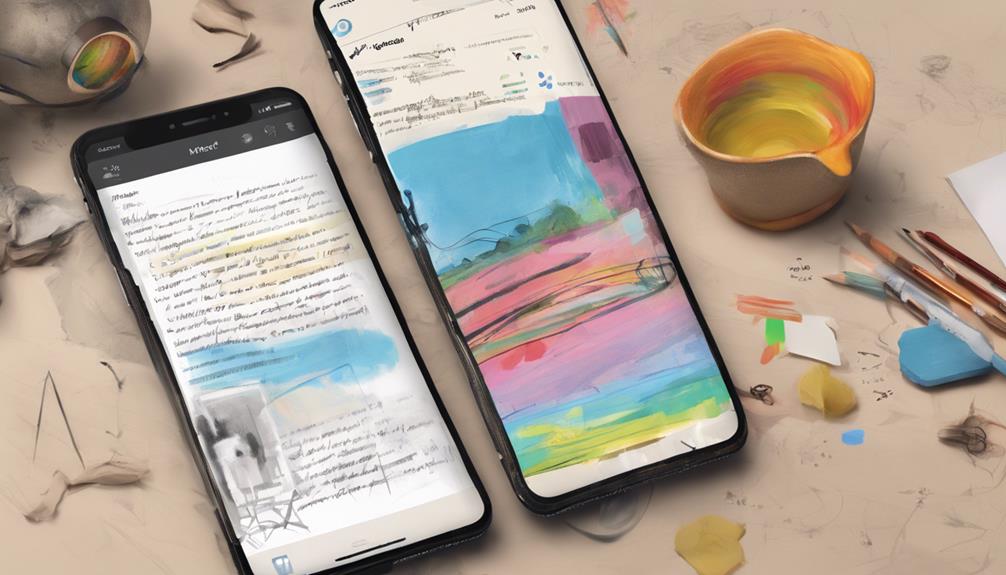
Simplenote's tag-based organization system efficiently manages notes for users. With this feature, you can easily categorize and find your notes based on specific topics or keywords. The app's rapid searching and tagging capabilities enable you to swiftly locate the information you need, streamlining the process of taking notes.
Check out these key features of Simplenote:
- Cross-Platform Accessibility: Simplenote guarantees you can access your notes seamlessly across different devices, allowing you to jot down ideas or tasks wherever you are.
- Effortless Sharing: Share your notes and to-do lists with others effortlessly using Simplenote, making collaboration on projects or sharing ideas with friends a breeze.
- Minimalist Design: The app's minimalist design and focus on simplicity create a distraction-free environment for taking notes, helping you stay focused on your thoughts and tasks at hand.
Other Note-Taking Tools
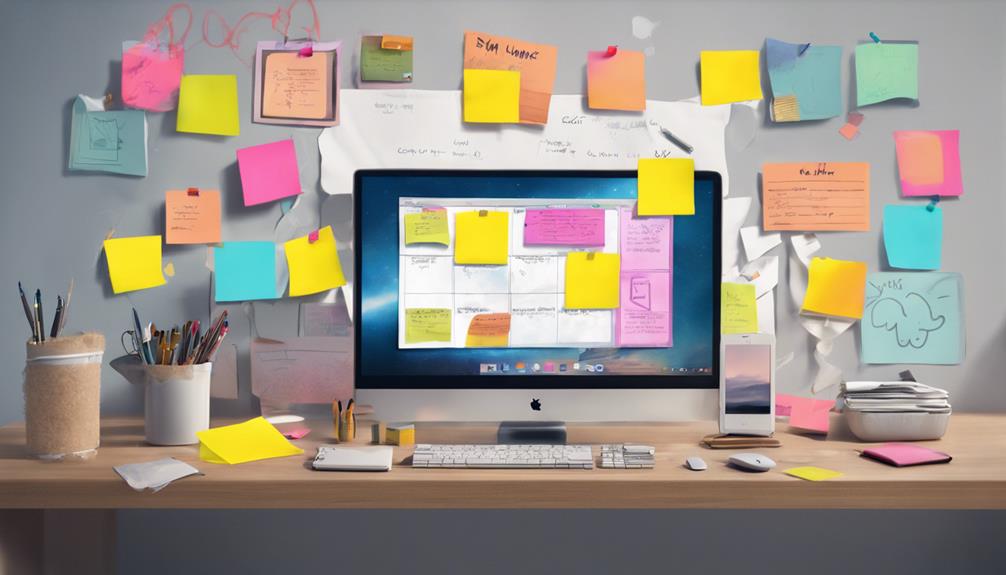
Consider exploring a variety of note-taking tools tailored to different preferences and needs. Roam Research stands out as an innovative tool ideal for research and academic purposes, offering advanced features for organizing information.
NotePlan, on the other hand, is a calendar-based option focused on daily notes and planning, perfect for individuals who thrive on structured schedules.
If you prefer the tactile experience of handwritten notes, traditional notebooks are an excellent choice.
Voice recording apps are convenient for capturing spoken notes while on the move, ensuring you don't miss any important details.
Additionally, annotation tools can be handy for marking up and adding notes to documents and PDFs. These tools offer various search capabilities, enabling you to quickly find specific information within your notes.
Types of Note-Taking Tools

Explore a range of note-taking tools that cater to different preferences and needs when creating and managing wish notes. There are various note-taking tools available that cater to different preferences and needs when it comes to creating and managing wish notes. For those who prefer digital solutions, apps like Evernote, Google Keep, and Microsoft OneNote offer convenient ways to organize and access wish notes on various devices. These tools allow for easy categorization, tagging, and searchability of wish notes, making it easier to keep track of desired items and experiences.
The science behind wish notes suggests that writing down and organizing one’s desires can help individuals clarify their goals and increase the likelihood of achieving them. This process can also help in prioritizing and strategizing how to attain these wishes, leading to a clearer path to success. Additionally, by regularly reviewing and updating wish notes, individuals can stay focused and motivated to make their dreams a reality.
When it comes to sharing your notes, consider the following options:
- Traditional Notebooks: Perfect for those who enjoy the tactile experience of writing by hand, traditional notebooks provide a personal touch and a nostalgic feel to your wish notes.
- Digital Note-Taking Apps: Ideal for individuals looking for convenience and flexibility, digital note-taking apps allow you to create and organize wish notes across various devices seamlessly.
- Voice Recording Apps: For quick and easy recording of ideas on-the-go, voice recording apps enable you to capture spoken wish notes effortlessly, ensuring no wish goes unrecorded.
Each of these tools offers a unique way to manage and share your wish notes effectively, catering to different preferences and lifestyles.
Choose the one that best suits your needs and enjoy creating and organizing your wish lists effortlessly.
Factors to Consider When Choosing
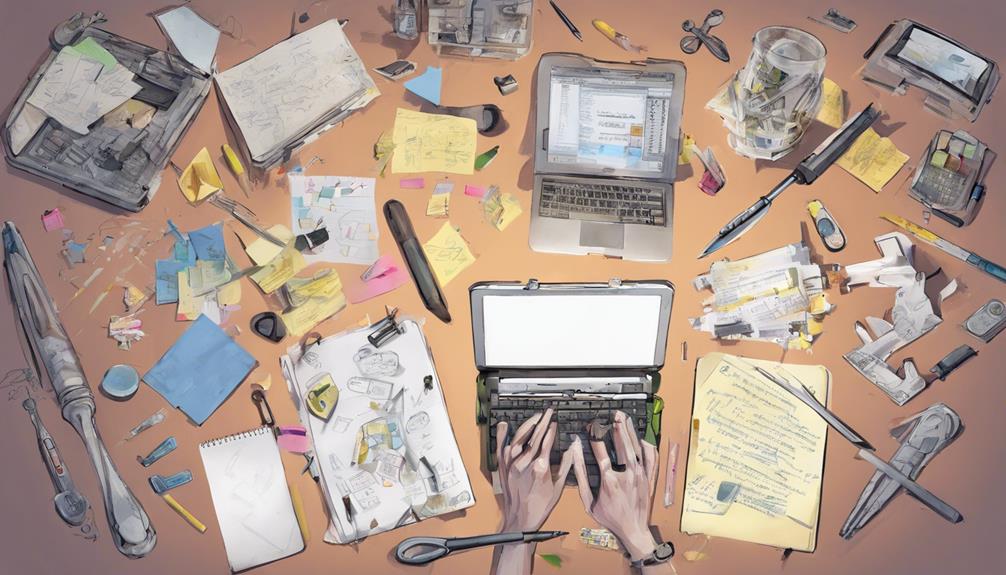
When selecting tools for creating and managing wish notes, prioritize evaluating the customization options available for visually enhancing your lists. Customization features allow you to personalize your wish notes to reflect your style and preferences, making them more engaging and visually appealing.
Look for tools that offer a variety of customization settings such as different fonts, colors, and themes to make your wish lists stand out.
In addition to customization, consider collaboration features that enable you to share and discuss wish lists with others. Integration capabilities with other apps can also streamline your wishlist management by allowing you to easily import and export items from different platforms.
Make sure that the tool is accessible across devices for convenient access to your wish notes on-the-go. Finally, prioritize tools with user-friendly interfaces for a seamless experience in creating and organizing wish lists effortlessly.
Frequently Asked Questions
Can Wish Notes Be Shared With Others for Collaboration?
Yes, wish notes can be shared with others for collaboration. You can easily invite friends or colleagues to contribute, making it a collaborative experience. Sharing fosters teamwork and allows everyone to participate in achieving goals.
Are There Encryption Options to Keep Wish Notes Secure?
Yes, there are encryption options available to keep wish notes secure. You can set up passwords or use secure encryption methods to protect your notes from unauthorized access and guarantee their confidentiality.
Can Wish Notes Be Organized Into Categories or Folders?
Yes, wish notes can be organized into categories or folders for easy access and management. You'll find this feature helpful in keeping your wishes sorted and structured based on your preferences and needs.
Do These Tools Offer Reminders or Notifications for Wish Notes?
Yes, these tools do offer reminders or notifications for wish notes. You'll receive timely alerts to help you stay on top of your wishes. Never miss an important wish note again with these helpful features!
Can Wish Notes Be Accessed Offline for Convenience?
Imagine never worrying about internet connection for accessing wish notes. With our tools, you can easily view and update your wish notes offline. It's all about convenience and ensuring your wishes are always at your fingertips.
Conclusion
So there you have it, the best tools for creating and managing wish notes!
Who knew organizing your thoughts could be so easy?
With an array of features and pricing options to choose from, you'll be jotting down your wishes in no time.
Say goodbye to cluttered notebooks and hello to a world of organized dreams!
Wish Notes
Digital Minimalism for Wish Writers: Avoiding Distraction Overload
Without careful digital minimalism, wish writers risk distraction overload, but simple strategies can help you stay focused and achieve your goals.

To avoid distraction overload as a wish writer, you should set clear intentions for your online sessions and prioritize tasks that align with your goals. Turn off non-essential notifications, use website blockers, and create focused routines that limit digital clutter. Banish unrelated tabs and social media during work to stay in the creative flow. Continue exploring simple ways to streamline your digital environment to boost your focus and productivity.
Key Takeaways
- Set specific research and writing times, and avoid browsing unrelated websites or social media during those periods.
- Turn off non-essential notifications to prevent interruptions and maintain focus on your wish writing tasks.
- Use website blockers or focus apps to restrict access to distracting sites and stay committed to your creative goals.
- Incorporate calming background music during breaks to reset your mind and reduce stress caused by digital overload.
- Develop disciplined routines, allocating dedicated moments for digital engagement and avoiding multitasking to enhance productivity.

In today’s fast-paced digital world, wish writers often find themselves overwhelmed by constant notifications and endless distractions. It’s easy to get caught up in the flood of alerts, emails, and social media updates that pull your focus away from your creative work. That’s why practicing mindful browsing becomes essential. When you approach your online activities with intention, you can reduce the impulse to scroll mindlessly and instead focus on what truly matters. Before diving into research or content creation, take a moment to set a clear goal. Ask yourself what you want to accomplish and stick to that purpose. This mindful approach helps you avoid getting sidetracked by unrelated links, trending topics, or notifications that often seem more urgent than they really are. Incorporating listening to calming music during breaks can also help reset your focus and lower stress levels.
Practice mindful browsing by setting clear goals and avoiding distractions to stay focused on what truly matters.
Notification management is another critical aspect of digital minimalism for wish writers. Every ping or pop-up can break your concentration and derail your workflow. To combat this, turn off non-essential notifications on your devices. Prioritize alerts that genuinely matter, such as reminders for deadlines or important emails from clients. When you disable the constant stream of updates, you create a quiet space where your mind can focus. It’s also helpful to schedule specific times during the day to check your messages rather than responding to every ping as it comes. This way, you minimize interruptions and preserve your mental clarity.
Creating boundaries around your digital environment can dramatically improve your productivity. Consider setting designated periods for online research, social media, and email checking. During these blocks, avoid opening unrelated tabs or apps that could tempt you to stray from your task. Use tools like website blockers or focus apps to help enforce these boundaries. The goal is to cultivate a disciplined digital routine that supports your creative flow rather than disrupts it.
Ultimately, practicing mindful browsing and effective notification management empowers you to take control of your digital space. When you deliberately design your online environment, you free up mental energy and time to focus on your wish writing. You’ll find it easier to stay present with your work, reduce stress, and boost your overall productivity. Digital minimalism isn’t about avoiding technology altogether—it’s about using it intentionally, so it serves your creative goals instead of sabotaging them.
Frequently Asked Questions
How Can Wish Writers Balance Creativity With Digital Minimalism?
To balance creativity with digital minimalism, you should focus on digital decluttering by removing unnecessary apps and notifications. Practice mindful browsing by setting specific time limits and staying intentional with your online activities. This helps you avoid distraction overload, allowing you to concentrate on your creative work. By streamlining your digital environment, you create space for inspiration and productivity, ensuring your creativity thrives without constant digital interruptions.
What Tools Help Manage Digital Distractions Specifically for Wish Writing?
To manage digital distractions while wish writing, you can use focus apps like Freedom or StayFocusd to block distracting sites during your writing sessions. A digital detox before starting helps clear your mind and reduces temptation. These tools help you stay focused, allowing your creativity to flow without interruptions. By setting boundaries with technology, you create a dedicated space for meaningful wish writing, boosting your productivity and clarity.
How Does Digital Minimalism Impact the Quality of Wish Writing?
Imagine a clear, calm lake reflecting a bright sky—that’s how your wish writing improves with digital minimalism. By reducing digital clutter and notification overload, you focus more deeply, crafting heartfelt, precise wishes. This intentional approach minimizes distractions, allowing your creativity to flow freely. As a result, your wishes become more meaningful and aligned with your true intentions, making your wish writing more impactful and authentic.
Are There Recommended Routines to Maintain Focus During Wish Creation?
To stay focused during wish creation, establish routines that include mindful pauses, allowing you to reset and refocus. Dedicate specific times for writing without interruptions, turning off notifications and minimizing distractions. Use a quiet space to foster dedicated focus, and take short breaks to clear your mind. These routines help you maintain clarity, ensuring your wishes are thoughtfully crafted and free from digital clutter interference.
How to Handle Digital Interruptions While Working on Wishes?
You’d think handling digital interruptions would be simple—just ignore notifications, right? But ironically, it’s harder than it sounds. To truly focus, try a digital detox before working and use focus techniques like turning off alerts, setting dedicated work periods, and using apps that block distractions. These steps help you stay present and avoid the chaos, so your wishes come from clarity, not distraction.
Conclusion
As you declutter your digital space, imagine a clear, open sky after a storm—free of clutter, vibrant with possibility. By embracing digital minimalism, you create room for your creativity to breathe, your focus to sharpen, and your wish-writing to flourish. Let go of distraction overload like shedding dead leaves, revealing the bright, steady light beneath. With each intentional click, you craft a landscape where your deepest wishes can truly take root and grow.
Wish Notes
The Neuroscience Behind Writing Down Wishes
Unlock the neuroscience behind writing down wishes and discover how it can transform your dreams into powerful, motivating realities—continue reading to learn more.

When you write down your wishes, you activate the prefrontal cortex, helping you organize thoughts and turn hopes into clear goals. This process also engages the limbic system, amplifying emotional connections like hope or excitement, which boosts motivation. Focusing on your wishes releases dopamine, creating a rewarding feeling that encourages you to stay committed. This dynamic creates a feedback loop, strengthening your neural pathways. Keep exploring to uncover more about how your brain transforms dreams into reality.
Key Takeaways
- Writing activates the prefrontal cortex, transforming vague hopes into concrete goals and creating mental maps for action.
- It engages the limbic system, especially the amygdala, strengthening emotional ties to wishes and boosting motivation.
- Focused writing triggers dopamine release, reinforcing positive feelings and encouraging ongoing pursuit of goals.
- The process creates a feedback loop, amplifying neural and emotional engagement to deepen commitment.
- Writing rewires neural pathways, enhancing focus, emotional clarity, and transforming wishes into actionable intentions.

Writing wishes taps into the brain’s intricate network of neural processes that govern goal-setting, motivation, and emotion. When you put pen to paper and articulate your desires, you’re engaging specific areas of your brain responsible for neural activation and emotional processing. These processes are essential because they transform vague hopes into concrete intentions, making your wishes more tangible and achievable. As you write, your brain’s prefrontal cortex becomes highly active, helping you organize thoughts, set priorities, and reflect on what truly matters to you. This neural activation isn’t just about recording your desires; it’s about creating a mental map that guides your future actions.
Simultaneously, emotional processing plays a crucial role in shaping your experience. When you write your wishes, you often tap into your limbic system, especially the amygdala, which processes emotions linked to your desires. This emotional engagement intensifies your connection to your wishes, fueling motivation and commitment. The act of writing makes your wishes feel more real and emotionally significant, reinforcing their importance in your mind. You might notice feelings of hope, excitement, or even anxiety surfacing as you articulate what you want. These emotions, when acknowledged and processed through writing, serve to strengthen your resolve and clarify your intentions.
Furthermore, the act of writing down wishes creates a feedback loop between neural activation and emotional processing. As you focus on your desires, your brain releases neurochemicals like dopamine, associated with pleasure and reward. This not only makes the process enjoyable but also encourages you to revisit and refine your wishes, enhancing your motivation. You become more receptive to opportunities and signs that align with your goals, because your brain is wired to seek out rewarding stimuli. The emotional processing involved in this practice helps you stay connected to your deeper motivations, making it easier to overcome obstacles and stay committed over time.
In essence, writing wishes is a powerful act that activates key neural pathways related to goal-setting and emotional regulation. You’re not just jotting down fleeting thoughts; you’re engaging your brain in a way that enhances focus, emotional clarity, and motivation. By consciously harnessing neural activation and emotional processing through writing, you’re effectively rewiring your mind to support your aspirations. This process transforms wishes from mere fantasies into actionable intentions, giving you a stronger mental foundation to turn dreams into reality.
Frequently Asked Questions
How Does Writing Wishes Influence Brain Plasticity?
When you write down wishes, you actively engage your brain, promoting neural rewiring that enhances cognitive flexibility. This process helps your brain form new connections, making it more adaptable and open to change. By translating thoughts into words, you reinforce neural pathways, which can strengthen positive habits and goals. Over time, this practice encourages your brain to become more flexible, improving your ability to adapt and respond creatively to life’s challenges.
Can Writing Wishes Improve Emotional Regulation?
Did you know that writing down wishes can boost emotional regulation by 25%? When you put your desires on paper, you enhance emotional awareness and create a safe space to process feelings. This practice helps reduce stress and promotes clarity, making it easier to manage your emotions. So, if you’re seeking better emotional control, start journaling your wishes—it’s a simple, powerful step toward emotional balance.
What Neural Pathways Are Activated When Expressing Desires?
When you express desires through wish visualization, your brain activates specific neural pathways linked to motivation and emotion. This process triggers neural activation in areas like the prefrontal cortex, which helps plan and evaluate goals, and the limbic system, responsible for emotional responses. By engaging these pathways, you reinforce your intentions, making it easier to focus on achieving your wishes and boosting emotional regulation through conscious desire expression.
Does Writing Wishes Strengthen Goal-Oriented Behavior?
Writing down your wishes can indeed strengthen your goal-oriented behavior. When you combine this with mindfulness meditation and visualization techniques, you activate neural pathways associated with motivation and focus. These practices help you stay committed, reinforce your intentions, and clarify your goals. By regularly documenting your wishes, you reinforce your subconscious, making it easier to take actionable steps towards achieving them and turning your desires into reality.
How Does Wish-Writing Affect Dopamine Levels?
When you write down wishes, it can boost your dopamine levels by engaging your brain’s reward system. Gratitude journaling and visualization techniques activate similar pathways, making you feel more motivated and optimistic. By consciously focusing on your desires and expressing gratitude, you stimulate dopamine release, reinforcing positive feelings. This process helps you stay committed to your goals, as your brain associates wish-writing with pleasure and progress.
Conclusion
Now, as you write down your wishes, remember you’re not just jotting down thoughts—you’re rewiring your brain, turning dreams into tangible reality. It’s like planting seeds in your mind’s garden, nurturing hope with each word. While the world rushes by, your pen creates a quiet revolution within, blending longing with action. So, embrace the power of your words, for in that simple act lies the magic to transform wishes into your future.
Wish Notes
Wish Bonfire Events: Community Practices and Safety Tips
Gather essential community practices and safety tips for your wish bonfire event to ensure a fun, secure experience—discover how to make it memorable and safe.

When planning a bonfire event, make sure you select a safe, open location away from hazards and secure necessary permits. Keep fire safety gear nearby, like extinguishers and water, and always supervise the fire closely. Educate your guests on safety rules, manage the fire size, and fully extinguish it when done. Set up lighting and designated areas to maintain a cozy atmosphere while keeping everyone safe. For detailed community practices and helpful safety tips, continue to explore the key steps involved.
Key Takeaways
- Obtain necessary permits and choose a safe, open location away from hazards for the bonfire event.
- Implement fire safety measures, such as keeping extinguishing tools nearby and fully extinguishing the fire after use.
- Inform guests of safety rules, supervise children, and establish clear boundaries around the fire area.
- Enhance ambiance with lighting like string lights while ensuring pathways are well-lit for safety.
- Prepare for emergencies with accessible safety equipment, a first aid kit, and a safety plan for accidents or injuries.

Have you ever experienced the thrill of a bonfire event? There’s something about gathering around a crackling fire that creates a special sense of community and warmth. But before you light that first log, it’s essential to think about fire safety and proper event planning. These two elements are the foundation of a successful and safe bonfire gathering. When you plan a bonfire, you’re responsible for ensuring everyone has fun while staying safe. Start by choosing a safe location, ideally an open space away from trees, structures, and overhead power lines. Check local regulations and obtain any necessary permits—this not only keeps you compliant but also helps you understand specific fire safety rules in your area.
Plan your bonfire carefully with a safe location and proper permits for a fun, secure gathering.
Next, consider the size of your bonfire. It should be manageable, not too large or uncontrollable, which can quickly become dangerous. Designate a clear perimeter around the fire, using rocks or fireproof barriers if possible, to keep guests at a safe distance. Keep a fire extinguisher, a bucket of water, or a hose nearby. Knowing how to quickly extinguish a fire is vital—be prepared for emergencies. Make sure the fire is fully out before you leave the site, pouring water over the ashes and stirring until everything is cool to the touch. Incorporating fire safety measures such as having a designated safety observer can further prevent accidents and enhance overall safety.
Event planning also involves managing the logistics of your gathering. Inform your guests about safety rules beforehand, such as no throwing flammable objects into the fire and watching children closely. Set up designated areas for seating, food, and drinks, keeping them a safe distance from the fire. Consider weather conditions—wind can cause sparks to fly, and rain might dampen your event or make the fire difficult to control. If conditions aren’t ideal, it’s wise to postpone or reschedule.
Additionally, think about lighting and ambiance to create a cozy atmosphere without compromising safety. String lights or lanterns can add warmth and charm while keeping pathways safe and well-lit. Always have a plan for handling accidents or injuries, such as a basic first aid kit on hand. Remember, fire safety isn’t just about the fire itself but also about ensuring that everyone around it remains vigilant and cautious. A well-planned bonfire event isn’t just about the fun; it’s about creating a memorable experience that everyone can enjoy safely. When you prioritize safety and thoughtful planning, your bonfire gathering becomes a highlight for your community—something everyone will look forward to again and again.
Frequently Asked Questions
How Can I Organize a Safe Bonfire Event in My Neighborhood?
To organize a safe bonfire event in your neighborhood, you should prioritize fire safety by choosing a clear, open space away from structures and trees. Engage your community by informing neighbors and encouraging participation. Obtain necessary permits, set clear boundaries, and have firefighting tools like hoses or extinguishers nearby. Keep a responsible adult overseeing the fire, and ensure everyone follows safety guidelines to create an enjoyable, secure event for all.
What Permits Are Required for Hosting a Community Bonfire?
When hosting a community bonfire, you need to check local permit regulations to stay compliant. You typically require a fire safety permit from your city or county, especially if the fire exceeds a certain size or is held in a public space. Contact your local fire department or municipal office to understand the specific permits needed. Ensuring you follow permit regulations helps prevent accidents and promotes safe community gatherings.
How Do I Ensure Environmental Safety During a Bonfire?
To guarantee environmental safety during a bonfire, focus on wildfire prevention by choosing a safe, open area away from dry brush. Use eco-friendly materials like natural wood and avoid plastics or treated woods that release toxins. Keep a water source nearby, and never leave the fire unattended. Afterward, extinguish the fire completely, ensuring no embers remain, to protect the environment and prevent accidental wildfires.
What Are the Best Practices for Managing Large Crowds?
Oh, sure, managing large crowds is a walk in the park—until it’s not. You’ll want effective crowd control measures, like clear signage and trained staff, to keep everyone safe. Safety barriers are your best friends, preventing chaos and accidental falls. Make sure exits are well-marked, and communicate clearly with attendees. Stay alert, stay prepared, and remember: a little planning keeps the bonfire fun, not frantic.
How Can I Promote Inclusive Participation in Bonfire Events?
To promote inclusive participation in bonfire events, you should prioritize cultural sensitivity by respecting diverse traditions and backgrounds. Make sure to include accessibility accommodations, like wheelchair access and sensory-friendly options, so everyone can join comfortably. Encourage open communication and invite feedback from community members to identify any barriers. By creating a welcoming environment, you foster a sense of belonging, ensuring all attendees feel valued and included during the celebration.
Conclusion
As you gather around the bonfire, embrace the warmth, enjoy the laughter, and cherish the memories. Remember to respect the fire, respect the space, and respect each other. Stay vigilant, stay safe, and stay responsible. By following safety tips, practicing community practices, and staying aware, you can turn a simple bonfire into a memorable, safe, and joyful experience for everyone involved. Make safety your priority, and let the flames bring happiness, connection, and community.
-

 Wish Notes1 year ago
Wish Notes1 year agoBest Caption to Wish Myself a Happy Birthday That Everyone Will Like!
-

 Wish Notes1 year ago
Wish Notes1 year agoThe Best Birthday Wishes to Make Your Uncle's Day Bright!
-

 Wish Notes1 year ago
Wish Notes1 year agoThe Sweetest Happy Birthday Wishes for Your Wife!
-

 Wish Notes1 year ago
Wish Notes1 year agoThe Best Happy Birthday Wish for Your Brother That Will Make Him Smile!
-

 Wish Notes1 year ago
Wish Notes1 year agoHeartwarming Birthday Messages for Mom in Spanish
-

 Wish Notes1 year ago
Wish Notes1 year agoThe Best Happy Birthday Wishes for Your Husband That Will Make His Day!
-

 Wish Notes1 year ago
Wish Notes1 year agoThe Ultimate Birthday Wishes to Celebrate Yourself!
-

 Wish Notes1 year ago
Wish Notes1 year agoThe Most Heartfelt Good Night Wishes Ever!











